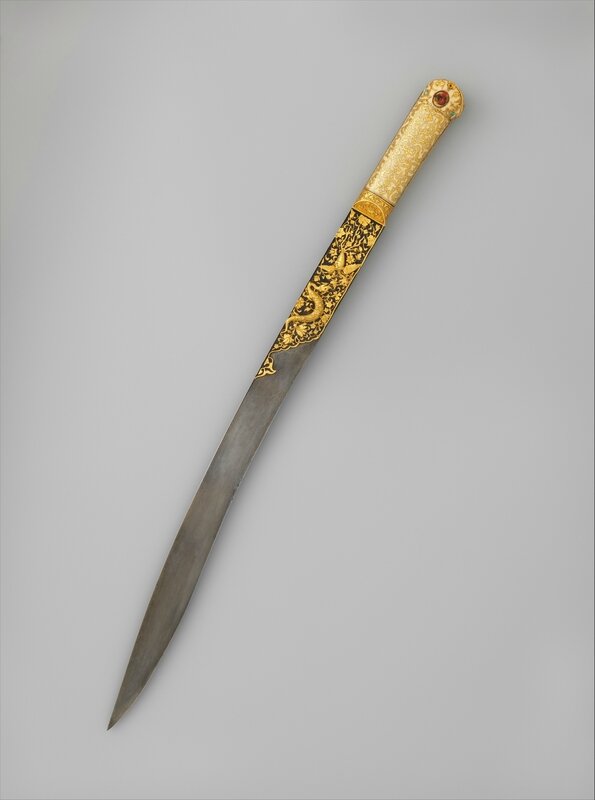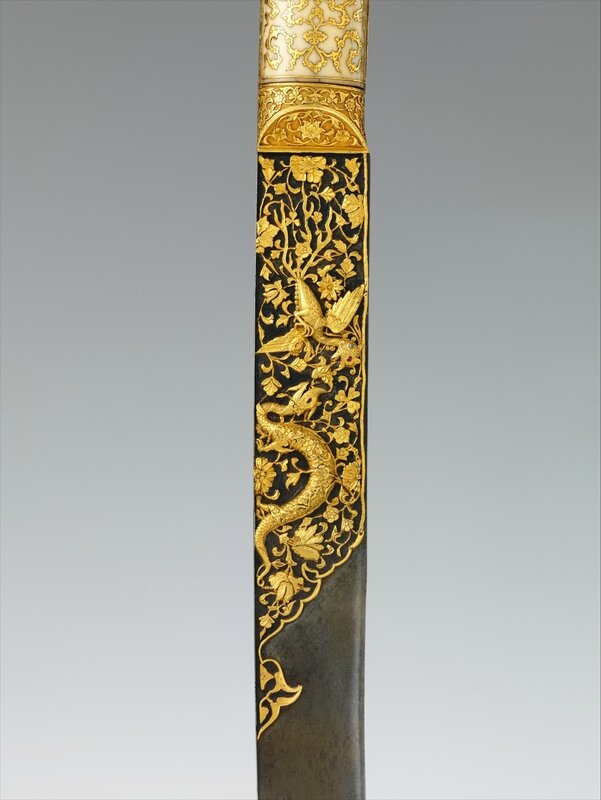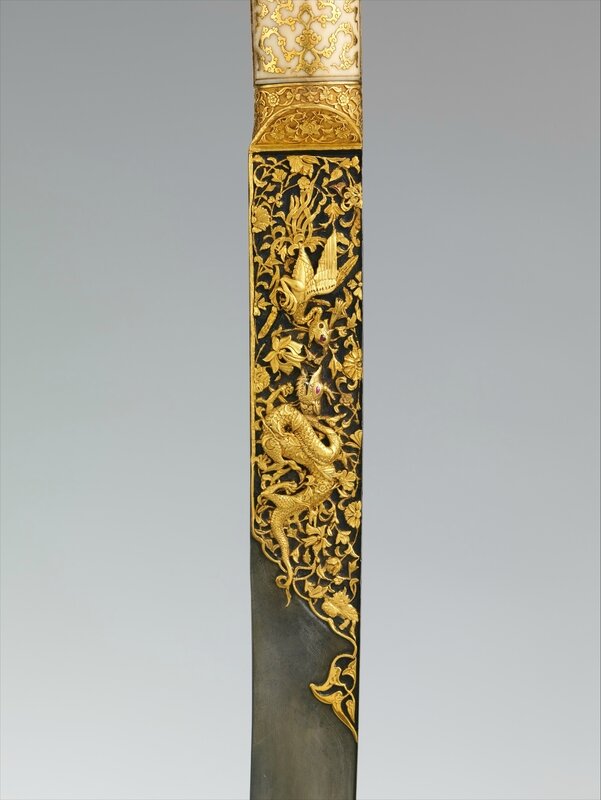Short Sword (Yatagan) from the Court of Süleyman the Magnificent (reigned 1520–66), Istanbul, ca. 1525–30
Short Sword (Yatagan) from the Court of Süleyman the Magnificent (reigned 1520–66), Workshop of Ahmed Tekelü (possibly Iranian, active Istanbul, ca. 1520–30), Istanbul, ca. 1525–30. Steel, gold, ivory (walrus), silver, turquoise, pearls, rubies. L. 23 3/8 in. (59.3 cm); L. of blade 18 3/8 in. (46.7 cm); Wt. 1 lb. 8 oz. (691 g). Purchase, Lila Acheson Wallace Gift, 1993, 1993.14 © 2000–2017 The Metropolitan Museum of Art.
Exquisite workmanship and lavish use of precious materials distinguish this sword as a princely weapon and exemplifies the opulence and refinement of Ottoman luxury arts. Almost identical to a yatagan (now in the Topkapi Palace, Istanbul) made in 1526–27 by the court jeweler Ahmed Tekel, for the Ottoman sultan Süleyman the Magnificent (r. 1520–66), this sword was undoubtedly made in the same imperial workshop. The gold incrustation on the blade depicts a combat between a dragon and a phoenix against a background of foliate scrolls. These figures, like the gold-inlaid cloud bands and foliate scrolls on the ivory grips, are Chinese in inspiration, and were probably introduced into Ottoman art through contacts with Persia.

/https%3A%2F%2Fprofilepics.canalblog.com%2Fprofilepics%2F1%2F0%2F100183.jpg)
/https%3A%2F%2Fstorage.canalblog.com%2F03%2F02%2F119589%2F96711876_o.jpg)
/https%3A%2F%2Fstorage.canalblog.com%2F11%2F31%2F119589%2F94773502_o.jpg)
/https%3A%2F%2Fstorage.canalblog.com%2F20%2F83%2F119589%2F94772815_o.jpg)
/https%3A%2F%2Fstorage.canalblog.com%2F26%2F72%2F119589%2F75604929_o.jpg)
/https%3A%2F%2Fstorage.canalblog.com%2F59%2F60%2F119589%2F26458628_o.jpg)












/http%3A%2F%2Fstorage.canalblog.com%2F30%2F59%2F119589%2F126245795_o.jpg)
/http%3A%2F%2Fstorage.canalblog.com%2F11%2F84%2F119589%2F126245370_o.jpg)
/http%3A%2F%2Fstorage.canalblog.com%2F41%2F14%2F119589%2F126244308_o.jpg)
/http%3A%2F%2Fstorage.canalblog.com%2F34%2F71%2F119589%2F73606475_o.jpg)